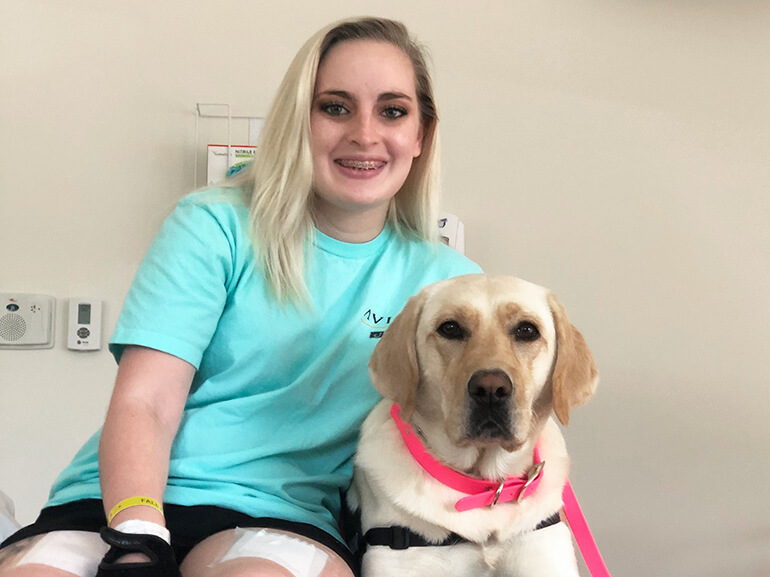Taylor's story

Taylor Albert was a typical outgoing and upbeat young woman. She was a new mom, worked as a server and loved riding horses. Taylor spent a lot of time with her family, who were supportive and helpful and she especially loved doting on her daughter.
Taylor was rarely ill before a Tuesday in mid-June when her legs suddenly began feeling tingly, numb and painful, making it hard to work. By the next day, which was her 21st birthday, the pain became worse. The following day, Taylor was in so much pain that she was crying and couldn’t get off the couch. Knowing that something was very wrong, her boyfriend took her to the local hospital and she was admitted.
Doctors initially didn’t know what was wrong with Taylor. They ran tests and began to suspect that she was suffering from neuromylelitis optica, a rare autoimmune disease that in which white blood cells and antibodies primarily attack the optic nerves and the spinal cord, causing weakness or paralysis in the legs or arms, loss of sensation and problems with bladder and bowel function. Taylor received four plasma transfusions and a spinal tap before being transferred to another hospital, where a full MRI and another spinal tap was performed. The imaging showed lesions on her spine, neck and left side of her brain. Doctors treated her with IV chemotherapy, but the damage was done. Taylor was paralyzed from the waist down.
Taylor spent five weeks in the hospital before she was transferred to Riverside Rehabilitation Hospital. Upon arriving, her initial goal was to become as independent as possible, knowing that gaining the ability to walk again was going to be a challenge as no one could predict when, or if, the feeling would return to her legs. Taylor also wanted to become more comfortable and independent in her wheelchair.
With the help of her care team, including a physical therapist and occupational therapist, Taylor began practicing to walk in the LiteGait, a training device that simultaneously controls weight bearing, posture and balance over a treadmill or the ground. Additionally, Taylor worked to gain nerve and muscle response by using a specialized exercise bike along with electrical stimulating pads on her legs which she said made it feel like her nerves were “waking up” and starting to work again. Her therapy team also worked on getting Taylor used to navigating obstacles in her wheelchair, including ramps.
Taylor also loved working with her recreation therapist, as well as the therapy dog, which made her feel “like I was at home, having a friend and a dog around.” She expressed that she enjoyed all of the therapy sessions, knowing everything was designed to help her gain independence and ability to walk again. Taylor said that completing every new task was exciting and that her therapy team kept her motivated to try new things every day.
By the time of her discharge, Taylor had made great progress and met her initial goals with a focus to continue working to regain her ability to walk with the help of outpatient therapy. “My overall experience at Riverside Rehabilitation Hospital has been nothing but absolutely amazing,” Taylor said.
“When I arrived I was nervous, as I hadn’t had any therapy up to that point, but everyone I encountered was super nice. My therapy girls were so great. They started slow to see what I could to and pushed me in the best way possible to get me to the strong, confident place I am today. I will forever be thankful for them and for Riverside.”